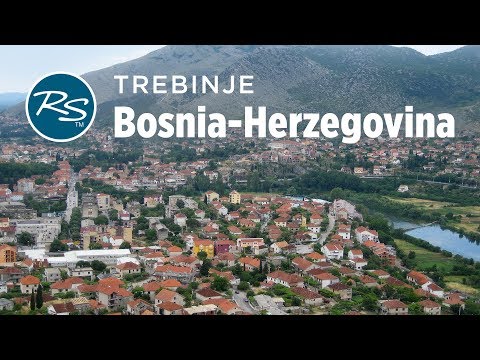
Nestled in the southeastern corner of Bosnia and Herzegovina, near the sun-soaked Adriatic coast, lies Trebinje — a hidden gem that encapsulates the diverse cultural heritage of the former Yugoslavia. Known for its serene landscapes, historic architecture, and vibrant local culture, Trebinje offers travelers a unique glimpse into the lesser-known facets of Balkan history and lifestyle. Drawing on insights from travel expert Rick Steves, let’s explore why this quaint city is a must-visit for anyone touring Eastern Europe.
#### Historical Tapestry
Trebinje’s history is a layered tapestry that reflects various influences through the ages. The city is one of the oldest in the region, dating back over two millennia. It has seen Byzantine princes and Ottoman sultans influence its cobblestone streets and architectural designs. The Old Town (Kastel), with its preserved medieval fortifications, tells stories of ancient defenses and strategic importance. Visitors can explore Ottoman-era mosques alongside Orthodox churches — notably the stunning Hercegovačka Gračanica atop Crkvina Hill, which offers panoramic views of the city against a backdrop of rolling hills.
#### Architectural Melange
The architectural diversity in Trebinje is remarkable. A stroll through its streets reveals an array from neoclassical to baroque styles juxtaposed with traditional Balkan houses. The Arslanagić Bridge (or Perović Bridge), a grandiose stone bridge originally built in the 16th century by Mehmed Paša Sokolović, illustrates Ottoman prowess in engineering and aesthetics. Relocated in the 1970s due to reservoir flooding from a nearby hydroelectric plant, this bridge stands as a symbol of resilience and adaptation typical to Trebinje’s storied past.
#### Cultural Vibrancy
Trebinje is not just about historic sites; it’s also a lively cultural hub. The city hosts numerous festivals throughout the year that celebrate everything from film to folk music, showcasing Yugoslav diversity and contemporary artistic expressions. One such event is the International Music Festival “Music & More SummerFest,” which attracts musicians worldwide to perform in various venues around the city.
Moreover, Trebinje’s market squares are vibrant gathering spots where locals sell everything from homemade cheeses to handcrafted souvenirs — perfect opportunities for visitors to engage with local artisans and sample regional delicacies.
#### Natural Escapes
For nature lovers, Trebinje offers access to pristine natural environments just outside its urban confines. The region’s mild Mediterranean climate fosters rich biodiversity which can be explored in nearby parks or along riverbanks conducive for leisurely walks or picnics under old plane trees.
#### Wine Country
No visit to Trebinje would be complete without tasting local wines. Situated close to Herzegovina’s wine route, Trebinje benefits from a climate ideal for viticulture. Local wineries open their doors to visitors looking to taste indigenous wine varieties like Žilavka and Vranac, often accompanied by insights into traditional wine-making processes shared by hospitable vintners.
### Conclusion: A Timeless Journey Awaits
Trebinje represents an enchanting confluence where East meets West; where past narratives weave seamlessly into present lifestyles—inviting travelers from around the globe into its quiet charm underscored by picturesque landscapes and rich cultural offerings highlighted expertly in Rick Steves’ travel guides.
Whether you’re after historical immersion or simple relaxation amidst beautiful surroundings—Trebinje promises experiences that resonate well beyond your stay. As Rick Steves often emphasizes about such hidden treasures throughout Europe: it’s not just about what you see; it’s about what you feel when you’re there—a sentiment that truly encapsulates visiting Trebinje.
